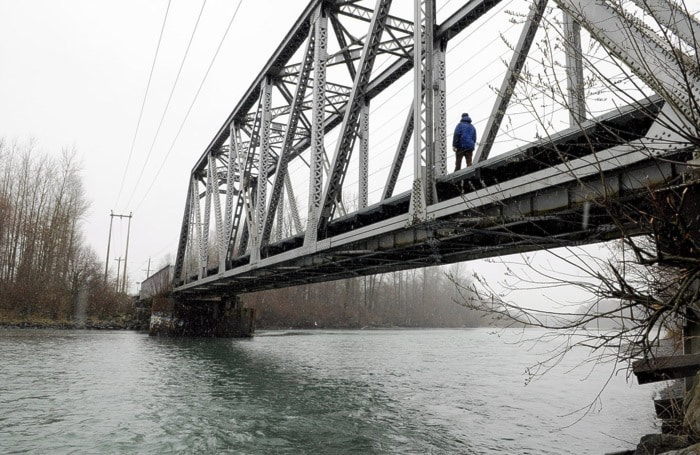Fraser Valley residents are raising the alarm about possible expansion of a pipeline carrying crude oil through the valley on its way to Vancouver and refineries around the world.
Chilliwack resident Sheila Muxlow is one of the organizers of an “educational event” next Tuesday at the UFV’s Chilliwack campus starting at 6:30 p.m. in room A203.
Most people — like Muxlow herself — are surprised to learn there is an oil pipeline running through the valley, some near residential areas of Chilliwack, and then on to a refinery in Burnaby and to ports in Vancouver.
Now, Kinder Morgan, which owns the Trans Mountain pipeline, plans to twin the line to expand its export capacity.
Company officials were not available Wednesday to discuss details of the proposal and to describe the pipeline’s exact route through Chilliwack and the Fraser Valley.
But spokesperson Lexa Hobenshield said the twinning project is in its early design stages, and an announcement on its scope isn’t expected until later this spring.
“The input from local interests will be critical to our planning,” she said, and the “18- to 24-month dialogue” with the public will be reviewed before the company files an application with the National Energy Board (NEB) for a regulatory review. That review is not expected until 2014.
“More information about the proposed project will be available in the coming months, and we look forward to the discussions that  will ensue,” she said.
will ensue,” she said.
Hobenshield did not respond to residents’ concerns as voiced by Muxlow about pipeline ruptures, the “toxicity” of tar sands or lack of consultation with municipal officials.
Muxlow said the tar sands in the pipeline is more toxic than oil, and because it is also more dense, would sink into the underground water table if a rupture occurred, making it harder to clean up and “that much more of a disaster.”
The pipeline’s Sumas terminal ruptured on Jan. 24, and although company officials said the spill was completely contained, area residents still questioned the long-term health effects.
An incident report by Kinder Morgan to the NEB is required.
In 2007, more than 1,500 barrels spilled in Burnaby after a construction crew ruptured the pipeline.
Hobenshield said pipelines “are proven to be the safest and most efficient means of transporting large volumes of crude oil and natural gas over land.”
“Our industrial safety record is first-class compared to any other way to move large quantities of energy ... this is absolutely by far the safest and most environmentally sound way to do that,” she said.
Muxlow contends the pipeline also poses a risk in “the bigger picture” — delaying the development of renewable energy sources.
“It’s holding us hostage to a fossil-fuel economy,” she said, “instead of developing more renewable, sustainable energy sources.”
rfreeman@theprogress.com
twitter.com/paperboy2
